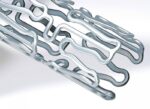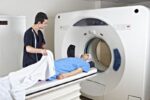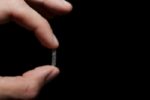Original title: Percutaneous coronary intervention with everolimus-eluting bioresorbable vascular scaffolds in routine clinical practice: early and midterm outcomes from the European multicentre GHOST-EU registry. Reference: Capodanno D et al. EuroIntervention. 2014 Jul 18. Epub ahead of print The GHOST-EU registry, that included 1189 patients from 10 European centers between 2011 and 2014, is now the largest registry...
1-Year Clinical Outcomes of Everolimus-Eluting Bioresorbable Vascular Scaffolds in Diabetic Patients
Original title: 1-Year Clinical Outcomes of Diabetic Patients Treated With Everolimus-Eluting Bioresorbable Vascular Scaffolds A Pooled Analysis of the ABSORB and the SPIRIT Trials. Reference: Muramatsu T et al. JACC CardiovascInterv. 2014 May;7(5):482-93. This study included ABSORB, ABSORB Extend and SPIRIT patients. A total of 136 diabetic patients and 415 non diabetic receiving everolimus-eluting bioresorbable scaffolds (Absorb) and...
Primary angioplasty with 2nd generation drug-eluting stents
Original title: Stent thrombosis with second-generation drug-eluting stents compared with bare-metal stents: Network meta-analysis of primary percutaneous coronary intervention trials in ST-segment–elevation myocardial infarction. Reference: Circ Cardiovasc Interv. 2013; Epub ahead of print. To compare the safety and efficacy of 2nd generation drug-eluting stents (DES) versus bare metal stents (BMS) in the context of primary angioplasty was conducted...
Multislice computed tomography for bioresorbable scaffolds: the end of invasive diagnostic studies?
Original title: Multislice Computed Tomography Angiography for Non-invasive Assessment of the 18-Months Performance of a Novel Radiolucent Bioresorbable Vascular Scaffolding Device (ABSORB Trial). Reference: Koen Nieman et al. J Am Coll Cardiol, article in press. Metal stents revolutionized coronary angioplasty procedures; however, they are permanent prosthetic devices that make re intervention difficult and prolongue thrombosis risk. This problem...
Bioresorbable stents produce more occlusion of the small side branches
Original title: Incidence and Short-Term Clinical Outcomes of Small Side Branch Occlusion Alter Implantation of an Everolimus-Eluting Bioresorbable Vascular Scaffold Reference: Takashi Muramatsu et al. J Am Coll Cardiol Intv 2013;6:247–57. Small Side Branch Occlusion (SBO) during coronary angioplasty has been associated with periprocedural infarction. Among the factors that cause SBO are carina displacement, plaque displacement and artery...
Future second-generation stents, today.
Original title: First Serial Assessment at 6 Months and 2 Years of the Second Generation of Absorb Everolimus-Eluting Bioresorbable Vascular Scaffold A Multi-Imaging Modality Study. Reference: John Ormiston et al. Circ Cardiovasc Interv. 2012;5:620-632. The first bioabsorbable stents eluting everolimus showed a 6-month delayed recoil resulting in late lumen loss of 0.44 mm, (intermediate between a metal stent...
Drug-Eluting Stents: device without polymers overcomes limitations of first generations stents
The NEXT randomized trial showed the superiority of a polymer-free amphilimus-eluting stent compared to paclitaxel-eluting stents with permanent polymers The NEXT clinical trial (International Randomized Comparison Between DES Limus Carbostent and Taxus Drug-Eluting Stents in the Treatment of De Novo Coronary Lesions), is a multicenter randomized trial (n=296) comparing coronary amphilimus eluting stent Cre8 (CID,...




